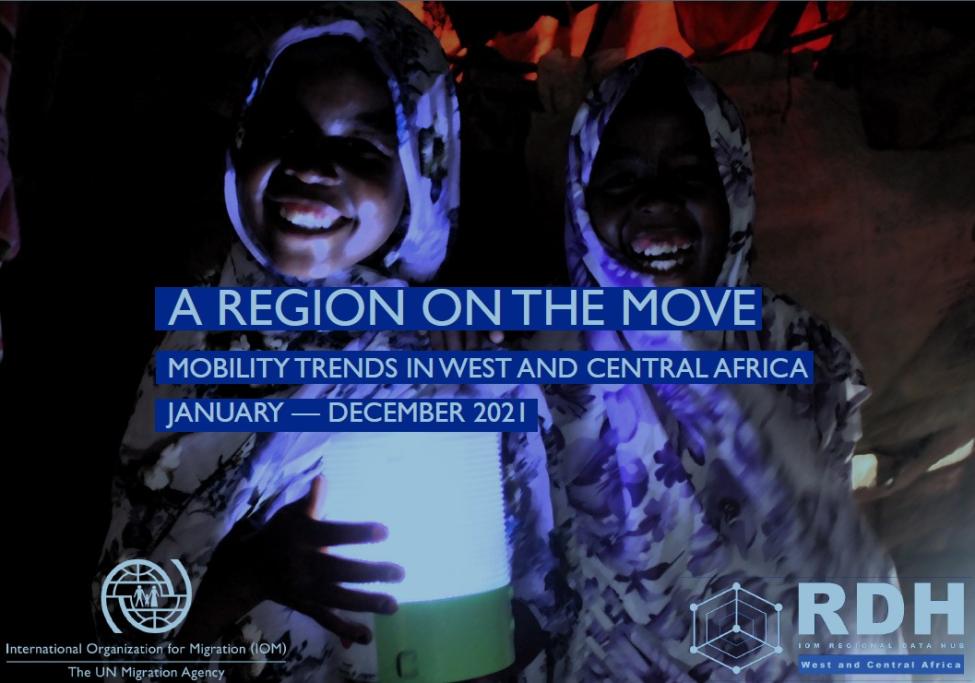-
Who we are
WHO WE AREThe International Organization for Migration (IOM) is part of the United Nations System as the leading inter-governmental organization promoting humane and orderly migration for the benefit of all. IOM has had a presence in West and Central Africa since 1998.
About
About
IOM Global
IOM Global
-
Our Work
Our WorkAs the leading inter-governmental organization promoting humane and orderly migration, IOM plays a key role to support the achievement of the 2030 Agenda through different areas of intervention that connect both humanitarian assistance and sustainable development. Across West and Central Africa, IOM provides a comprehensive response to the humanitarian needs of migrants, internally displaced persons, returnees and host communities.
Cross-cutting (Global)
Cross-cutting (Global)
- Where we work
- Take Action
- Data and Resources
- 2030 Agenda
New report shows irregular migrant arrivals to Europe from West and Central Africa grew in 2021 for the first time in seven years
Dakar, Senegal – Irregular migrant arrivals to Europe from West and Central Africa increased in 2021 for the first time since the 2015 refugee crisis, according to the 2021 edition of the A Region on the Move report produced by the International Organization for Migration (IOM) in West and Central Africa, published on 6 April 2022.
Migration flows within the region also witnessed significant growth as a consequence of the socioeconomic impact of the COVID-19 crisis, increasing by 13 per cent compared to 2020. Meanwhile, the number of internally displaced persons in the region climbed by 9 per cent, as humanitarian crises saw varying degrees of degradation over the course of the year. These are three of the key findings of the report, providing an in-depth analysis of mobility patterns and trends in the region during the year 2021.
“The 2021 edition of the A Region on the Move report strengthens the evidence base around migration in West and Central Africa. By providing a detailed overview of mobility patterns and trends in the region over the course of 2021, this report enriches our understanding of regional mobility. We hope it will inform efforts by governments and partners to produce tailored evidence-based migration programmes and policies that benefit people on the move,” says Christopher Gascon, IOM Regional Director for West and Central Africa.
The report introduces and analyzes forced displacement trends in the five major displacement crises in the region: the Lake Chad Basin, Central Sahel, the Central African Republic, Cameroon’s Anglophone Regions and Nigeria’s North West/North Central Zones, which host 89 per cent of internally displaced persons in West and Central Africa. This region hosts one of the largest internally displaced populations in the world with over 8.2 million internally displaced persons. Over the course of the year, the observed increase in displacement was driven primarily by the deterioration of security conditions in Burkina Faso, Far North Cameroon and North West & North Central Nigeria.
Two key trends in migration flows from West and Central Africa were identified: an increase in irregular migrant arrivals to Europe, which grew by 38 per cent between 2020 and 2021; and high numbers of migrant crossings along the Atlantic route linking West Africa to the Canary Islands, which witnessed over 22,000 arrivals in 2021. Both these trends are, at least partially, linked to the reopening of borders and easing of mobility restriction measures, as well as the economic impact of the COVID-19 pandemic, which has pushed many into poverty and spurred migration across the region.
A Region on the Move also includes two case studies which provide in-depth explorations of the Stability Index, a groundbreaking tool developed by IOM to measure the stability of living conditions in displacement hosting locations, informing programming along the humanitarian-development-peace nexus; and of the link between migration, environment and climate change, showcasing the role and benefit of migration as an adaptation strategy to environmental and climate change.
Read the report here.
For more information, please contact Alpha Seydi BA, Communications and Media Officer for the International Organization for Migration in West and Central Africa: aba@iom.int
